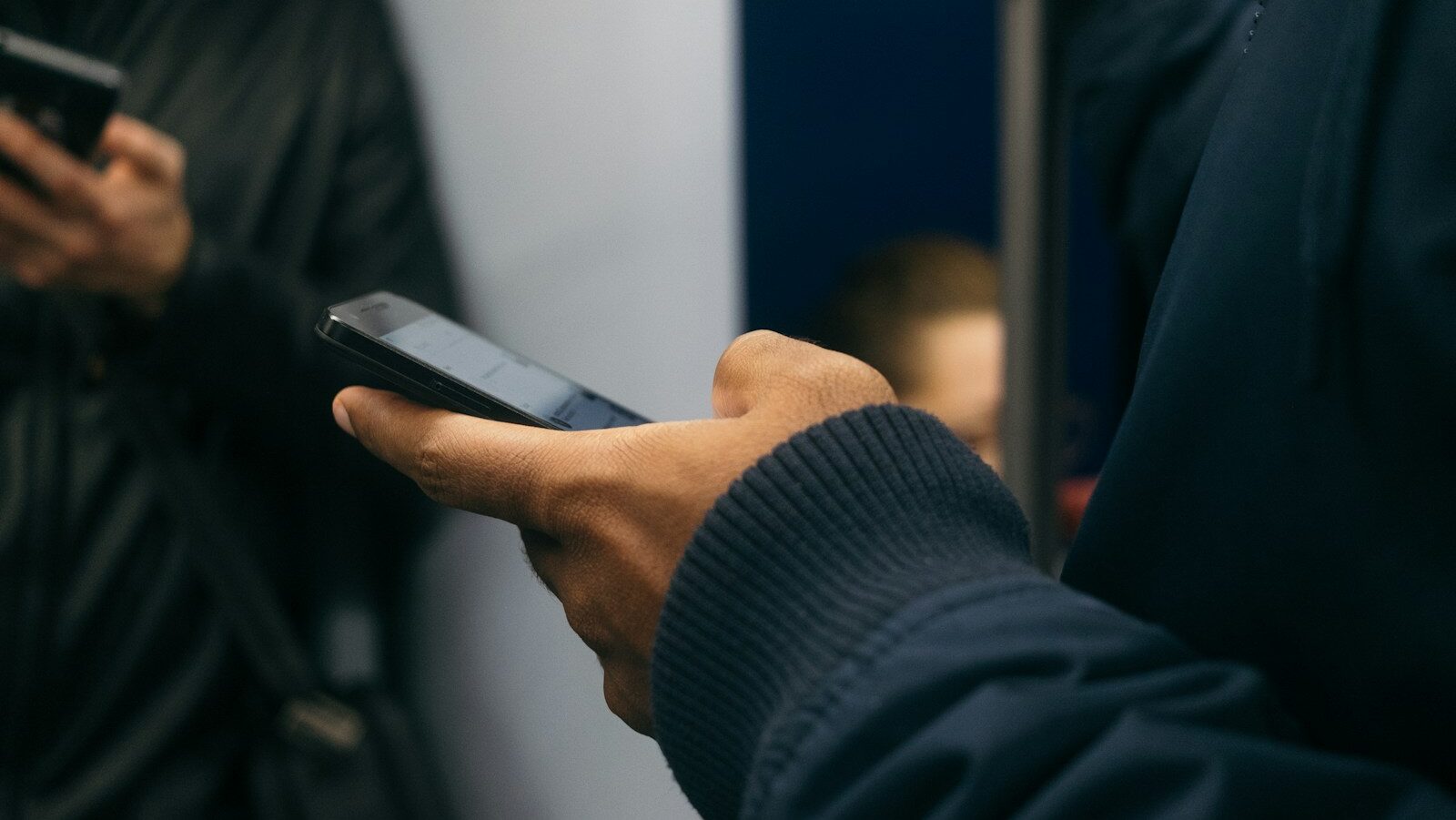Digital reality in flux: How digital spaces are shaping human interactions
Digital media shapes human interactions, transforming how people view themselves, others, and reality. Coaches can help clients build awareness to navigate digital spaces in a way that supports both online and real-life well-being.
Challenge:
Overexposure to negative media can lead to feelings of isolation, hopelessness, and anxiety
Opportunity:
Coaches can help clients mindfully engage with technology in a way that sustains holistic well-being
Impact:
Leveraging technology for positive connection repositions technology as a tool for individual and collective well-being
Wisdom Weavers
Technology overuse presents new challenges in mental and social well-being
The internet has changed how people connect with the world and each other. Digital spaces like messaging apps, social media, and news websites are designed to drive constant engagement. The result has created a divided internet that weakens empathy and distracts people from daily life. As a result, researchers, policymakers, and international organizations are increasingly concerned about the impact of the internet on mental health, social cohesion, and political stability. Some countries have even proposed laws to ban social media and cell phones for children, citing the risk of depression and anxiety for vulnerable users.
Sociologist and Wisdom Weaver Dr. Byron Johnson believes that while the internet and smartphones are partly responsible for these issues, the same technology can be used for good. By changing how individuals use technology and developing digital well-being skills, he argues that society can overcome some of the negative aspects of technology and leverage digital spaces for connection.
Coaching for the future of digital well-being
As a positive psychologist and coach, Wisdom Weaver Dr. Ryan Niemiec emphasizes that technology is neither good nor bad; however, “We have not met the increase in technology with enough strategies to support well-being and counter the suffering that comes from technology.” Coaches can address this gap by guiding clients to evaluate the role of technology in their lives. This approach is two-fold: coaches can help clients consider whether technology use supports or hinders well-being needs and help clients understand which activities are better suited for in-person versus digital spaces.
Coaches play an important role in addressing immediate digital well-being needs and preparing individuals for a future where technology is integrated into every aspect of life. This is no longer a distant reality; people are increasingly connected to the internet, from personal devices to smart technology in the home. With the expansion of satellite-based internet, even the most remote parts of the world will soon engage in digital spaces. Bridging the digital divide means new internet users will navigate digital spaces already distressed by privacy concerns, AI-driven misinformation, and discord. Throughout this shift, skills like critical thinking, mindfulness, and constructive communication will help clients navigate the negative aspects of the digital world while embracing the benefits of a diverse and connected global community.
Digital well-being present and future:
Digital well-being describes how an individual’s relationship with technology impacts their physical, mental, and social health. Emerging coaching practices in digital well-being work with clients to identify when technology overuse can contribute to challenges like stress, lost sleep, burnout, loss of productivity, and isolation. Once clients have a clear picture of their digital habits, they can choose how to engage with technology to align with their values and goals.
Looking to the future: Coaches can help clients build the skills to support meaningful connections and overcome digital well-being challenges like negative news, misinformation, and conflict in digital spaces.
Reclaiming control over digital devices and information starts with awareness
Excessive use of technology poses one of the biggest challenges to achieving good digital well-being. Wisdom Weaver Amy Blankson, a researcher in digital well-being and happiness, emphasizes that smartphones, mobile apps, and social media platforms are intentionally designed to distract users. Instead of feeling guilty about digital overuse, she encourages clients to evaluate when technology supports individual needs and when it distracts from other priorities like work, social connection, and physical health.
On a deeper level, coaches can invite clients to consider how the information they access in digital spaces impacts their emotions and perceptions of the world. The internet presents information that either aligns with users’ interests and beliefs or is aimed at triggering extreme emotions in order to keep users engaged. Creating awareness around this design can help clients make informed choices about what types of content they want to consume.
Coaches can help clients evaluate how content affects mental well-being
When individuals use the internet, they are often unaware that digital spaces are designed to spark emotional responses that prompt users to comment, share, or engage with more content. Oftentimes, the most successful social media posts and news stories aim to create rage, disgust, or fear. Ryan reveals that “The internet has made us a lot more aware of the suffering of ourselves and others. If we look at history, our suffering is declining over time in terms of violence and poverty. But our consciousness of suffering seems to be growing.” Returning to the addictive nature of negative news, Amy points to the growing phenomenon of doomscrolling or compulsively reading negative news for an extended period of time. She suggests that “As coaches, we can help individuals think, ‘How do you reclaim that sense of control over your devices?’ and ‘What are our devices doing to us?’” Coaching conversations can help reveal how negative news impacts a client’s emotions, sleep, and relationships.
“We have lost our impulse control with our devices because it preys upon our deepest impulses, including the fact that one of our strongest human urges is the need to be needed.”

Digital content can also impact client self-image. Coach and Wisdom Weaver Siddhi Japee shares that during the pandemic, many of her clients were concerned about the way social media was impacting their children’s well-being. She adds, “When young people are navigating ‘who am I?’ in real life and digital spaces, that can add a lot of stress. Even from a young age, children are worried about how people perceive them online.” Coaches can help clients of all ages be mindful of the fact that social media presents only a glimpse into another person’s life and is not a helpful tool for comparison. Instead, clients who focus on their own growth have a better understanding of individual progress.
Reframing technology as a place for intentional connection
Building capacity in digital well-being also means helping clients identify when technology is not the best solution. Byron asserts that while technology can help people connect virtually, it can also promote isolation. Pointing to research on the healing influence of community for those struggling with addiction, Byron suggests that community relationships can help individuals with digital addiction to support their well-being. Coaching conversations can help clients identify the different effect of virtual versus in-person communication, highlighting the value of human connection as a part of a holistic well-being framework. Coaches can also help clients stay accountable to their social connection goals, acknowledging when clients have made strides in deepening relationships with individuals in their daily lives.
For online communication, skills like critical thinking, mindfulness, and constructive communication have the potential to reshape online discourse, moving people out of upsetting spaces. Amy points out that “the way we interact on devices is changing relationships, communication, our sense of psychological safety, and the environment around us.” Individuals can also shape the future of the internet, advocating for more empathetic communication in a diverse digital world. Clients who have the skills to evaluate the truthfulness of information, find clarity to avoid misunderstanding, and bridge differences will be able to reduce and avoid online conflict that harms digital well-being.
Creating future digital spaces centered around positive connection
As social interactions increasingly move to digital spaces, Siddhi hopes that advancements like AI and virtual reality will bridge communication challenges by replicating real-world experiences in digital spaces. She asks, “How can we activate the part of the brain that senses physical touch or models a sense of closeness? The more that happens, the more it will help people find deeper connection in digital spaces.” As technology advances, Siddhi believes that replicating physical closeness may also reignite empathy in digital conversations.
Leading the call for a more human internet, organizations are capitalizing on collaborative digital spaces to foster knowledge sharing among employees who are tackling a shared challenge. Another solution involves leveraging AI to reimagine the way people engage with digital content. On a structural level, algorithms could deprioritize negative news, limiting doomscrolling and highlighting advancements in human and planetary well-being. The algorithms that create echo-chambers could be replaced with ones that expose people to diverse ideas and perspectives, leading to new opportunities for individuals to create digital communities around a specific purpose or ethos. Among these structural changes, coaches will continue to play an active role shaping the future of digital well-being by emphasizing humanity in a digital world.
A Call to Action for Coaches
The coaching industry has undergone a rapid transformation to integrate new technologies into coaching practice. However, little attention has been paid to the impact of technology on both coach and client well-being. As of 2024, only one accredited coach training program covered topics in digital well-being. Similarly, major accrediting bodies have been slow to recognize the role of technology in shaping professional development and individual client well-being.
Organizations and individual clients are looking for support in managing their digital habits, reducing technology-related stress, and strengthening social relationships. As technology continues to play an expanding role in both work and personal lives, coaches will need to understand the relationship between digital habits and well-being. Recognizing digital well-being as part of a holistic well-being framework enables coaches to support the needs of clients while safeguarding their own well-being in a digitally connected world.
Transformational Questions:
- How does the anonymity provided by digital communication platforms affect the level of empathy people exhibit?
- In what ways is digital communication impacting face-to-face interactions in physical spaces?
- What role does digital media play in shaping societal norms and values, and how does this influence individual well-being?
- What potential long-term effects might excessive screen time have on the emotional regulation of children and adolescents as technology advances?
- What are the implications of the echo chamber effect of digital media on individual well-being and collective harmony?
- What structural changes to the internet could be implemented to create a more human-centered experience, and how might these changes shape future interactions online?
- What other skills will people need to cultivate to support their digital well-being in the evolving digital spaces of tomorrow?
More resources on digital well-being:
- Read the World Economic Forum “2024 Global Risks Report” to learn more about how AI and technology are driving misinformation and polarization on the internet
- Learn more about the relationship between digital transformation and the future of well-being by reading the “How’s Life in the Digital Age?” report by the OECD
- Explore continued education opportunities like the ICF-accredited training in digital well-being through Consciously Digital
- Consider tools like the Digital Wellness Institute’s Digital Flourishing Survey or Google’s Digital Well-Being Experiments to help your clients learn more about their relationship to technology







